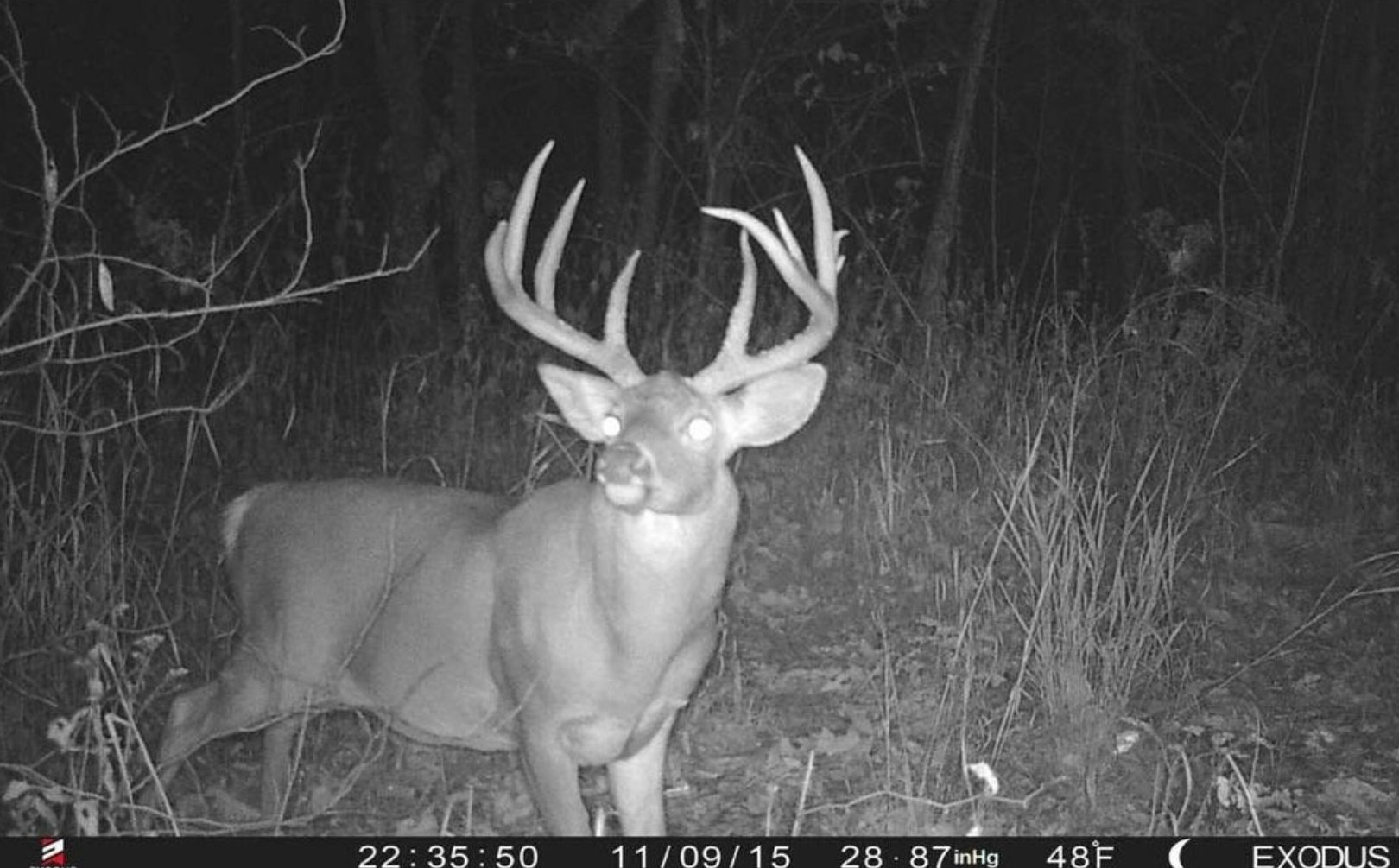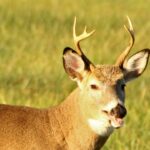Get ready to dive into the captivating world of big whitetail deer on trail cam! Trail cameras have revolutionized wildlife monitoring, offering us unprecedented insights into these majestic creatures. Join us as we explore the fascinating biology, behavior, and management of whitetail deer through the lens of trail cameras.
In this comprehensive guide, we’ll uncover the secrets of trail camera technology, delve into the factors that influence whitetail deer size and antler growth, and provide practical techniques for estimating deer size from trail camera images. Get ready to enhance your wildlife knowledge and gain a deeper appreciation for these magnificent animals.
Whitetail Deer Biology and Behavior
Whitetail deer are iconic members of North American wildlife, known for their adaptability, grace, and distinctive physical features. Understanding their biology and behavior is crucial for appreciating their ecological importance and for effective wildlife management.
Physical Characteristics and Adaptations
Whitetail deer exhibit a range of physical characteristics that enable them to thrive in diverse habitats. Their bodies are well-adapted for agility and camouflage. They have long, slender legs for running and jumping, and their hooves provide stability and traction on various terrains.
Their reddish-brown coats blend seamlessly with forest and brush environments, providing effective concealment from predators.
Typical Behavior and Habitat Preferences
Whitetail deer are adaptable herbivores that inhabit a variety of ecosystems, including forests, grasslands, and wetlands. They are primarily crepuscular, meaning they are most active at dawn and dusk. During the day, they seek refuge in dense vegetation or wooded areas to rest and avoid predators.
Whitetail deer are known for their keen senses of hearing and smell, which help them detect danger and locate food sources.
Social Structure and Communication Methods
Whitetail deer exhibit a complex social structure that varies seasonally. During the breeding season, bucks form bachelor groups, while does and fawns form smaller family units. Social interactions include grooming, play, and vocalizations. Whitetail deer use a variety of vocalizations to communicate, including grunts, snorts, and bleats.
They also use body language and scent marking to convey messages and establish dominance.
Trail Cameras and Their Use in Wildlife Monitoring

Trail cameras are essential tools for wildlife biologists and researchers to monitor wildlife populations and study their behavior. They provide a non-invasive method to capture images and videos of animals without disturbing them.Trail cameras work by detecting movement using passive infrared (PIR) sensors.
When an animal moves in front of the camera, the sensor triggers the camera to take a picture or video. The camera then stores the image or video on a memory card.
Advantages of Using Trail Cameras
* Non-invasive: Trail cameras do not disturb animals, making them ideal for studying wildlife behavior.
Remote monitoring
Trail cameras can be placed in remote areas, allowing researchers to monitor wildlife populations that are difficult to observe directly.
Yo, check out this massive whitetail deer I spotted on my trail cam! It’s a real beast. If you’re a hunter or just love wildlife, you need to see this. And if you’re ever in the Ottsville area, make sure to stop by 1323 Deer Run Rd for some incredible wildlife sightings.
I’ve heard they have some amazing trail cams set up, so you’re sure to catch some incredible footage of whitetail deer like this one.
Cost-effective
Trail cameras are relatively inexpensive compared to other wildlife monitoring methods.
Time-lapse photography
Trail cameras can be set to take pictures or videos at regular intervals, providing a time-lapse record of animal activity.
Limitations of Using Trail Cameras
* Limited field of view: Trail cameras have a limited field of view, which can result in missing animals that are not directly in front of the camera.
False triggers
Trail cameras can be triggered by non-target animals, such as birds or insects, which can result in wasted images.
Battery life
Trail cameras require batteries to operate, which can limit their use in remote areas.
Image quality
Trail cameras can produce low-quality images, especially in low-light conditions.
Ethical Considerations and Best Practices for Using Trail Cameras
* Obtain permission from landowners before placing trail cameras on their property.
- Respect the privacy of animals and avoid placing trail cameras in areas where they may be disturbed.
- Use trail cameras for legitimate scientific or educational purposes only.
- Remove trail cameras from the field when they are no longer needed.
Factors Influencing Whitetail Deer Size and Antler Growth: Big Whitetail Deer On Trail Cam
The size of whitetail deer and the growth of their antlers are influenced by a complex interplay of genetic and environmental factors. Understanding these factors is crucial for managing whitetail deer populations and promoting their overall health and well-being.
Genetics
Genetics play a significant role in determining the overall size and antler characteristics of whitetail deer. Different genetic lineages exhibit variations in body mass, antler size, and shape. Some genes are responsible for regulating growth hormone production, while others influence the development of specific antler traits.
Nutrition
Nutrition is a critical environmental factor that affects whitetail deer size and antler growth. A diet rich in protein, minerals, and vitamins is essential for optimal growth and development. During the spring and summer months, deer rely on high-quality forage, such as young leaves, buds, and succulent vegetation.
As the seasons change, deer switch to a diet consisting of browse, acorns, and other hard mast. Adequate nutrition throughout the year ensures that deer have the necessary resources to support their growth and antler development.
Habitat Quality
The quality of the habitat in which whitetail deer live also influences their size and antler growth. Habitats with abundant food sources, clean water, and adequate cover provide optimal conditions for deer to thrive. Conversely, habitats degraded by human activities, such as deforestation or pollution, can limit the availability of resources and hinder deer growth and development.
Age
Age is another important factor that affects whitetail deer size and antler growth. As deer mature, their bodies and antlers continue to grow. Typically, deer reach their peak size and antler development between the ages of 4 and 8. However, factors such as nutrition and habitat quality can influence the rate of growth and development, resulting in variations in size and antler characteristics among individuals of the same age.
Hunting Pressure and Management Practices
Hunting pressure and management practices can also impact whitetail deer size and antler growth. Selective harvesting of large bucks can lead to a decrease in the average size of deer in a population. Conversely, implementing age-based harvest regulations and promoting habitat conservation can help maintain a healthy population with good genetic diversity and antler characteristics.
Techniques for Identifying and Estimating Whitetail Deer Size from Trail Camera Images

Estimating the size of whitetail deer from trail camera images is a valuable technique for wildlife managers and hunters. Several methods can be used to estimate deer size, each with its advantages and limitations.
Visual Estimation
Visual estimation is the simplest method for estimating deer size. By comparing the deer to a known object in the image, such as a tree or fence post, an observer can estimate the deer’s height at the shoulder (HS) and body length (BL).
Accuracy of visual estimation can be affected by factors such as camera angle, distance to the deer, and the observer’s experience. However, with practice, experienced observers can estimate deer size with reasonable accuracy.
Grid Method
The grid method involves superimposing a grid over the deer’s image. By counting the number of grid squares that fit within the deer’s body, an observer can estimate the deer’s size.
The accuracy of the grid method depends on the size of the grid squares and the distance to the deer. Smaller grid squares provide more accurate estimates, but they can be more difficult to count, especially in low-resolution images.
Software-Based Estimation
Several software programs are available that can automatically estimate deer size from trail camera images. These programs use algorithms to analyze the deer’s body shape and dimensions.
Software-based estimation can provide more accurate estimates than visual estimation or the grid method, but it requires specialized software and can be more time-consuming.
Those big whitetail deer on trail cam are majestic creatures. If you’re lucky enough to harvest one, you’ll want to preserve its memory with a camo deer mount . These mounts are a great way to show off your hunting skills and commemorate your successful hunt.
Plus, they look amazing in any room of your house. And who knows, maybe your camo deer mount will inspire you to get back out there and bag another big one.
Tips and Tricks for Accurate Estimation
- Use high-quality images with good resolution.
- Ensure the deer is standing broadside to the camera.
- Use a known object in the image for comparison.
- Estimate the deer’s HS and BL in inches or centimeters.
- Practice estimating deer size with known deer before attempting to estimate unknown deer.
Applications and Benefits of Trail Camera Data for Whitetail Deer Management

Trail camera data provides valuable insights into whitetail deer population dynamics, habitat preferences, and hunting strategies. It offers a non-invasive method to monitor deer populations, assess habitat quality, and develop informed management strategies.
Population Monitoring
- Trail cameras can estimate deer density by capturing images of individuals over a known area.
- Data can be used to track population trends, monitor changes in sex ratios, and identify areas with high deer concentrations.
- Long-term data can reveal population fluctuations and help identify factors influencing deer numbers.
Habitat Management
- Trail cameras can identify areas of high deer activity, indicating preferred habitats or travel corridors.
- Data can guide habitat improvement efforts, such as planting food plots, creating water sources, and managing forest cover.
- By understanding deer movements, managers can optimize habitat to support healthy deer populations.
Hunting Strategies, Big whitetail deer on trail cam
- Trail cameras provide valuable information on deer movement patterns and buck-to-doe ratios.
- Hunters can use this data to identify areas with high deer activity and target specific bucks during hunting season.
- Trail camera data can also help hunters assess the impact of hunting pressure on deer behavior and adjust hunting strategies accordingly.
Conservation and Research
- Trail camera data can contribute to research on deer biology, behavior, and genetics.
- Data can be used to study deer migration patterns, identify genetic diversity, and assess the impact of human activities on deer populations.
- Trail cameras provide a valuable tool for conservation efforts aimed at protecting and managing whitetail deer populations.
Conclusive Thoughts

As we conclude our journey into the world of big whitetail deer on trail cam, let’s remember the importance of ethical and responsible wildlife monitoring practices. By using trail cameras wisely, we can contribute to the conservation and management of these incredible creatures while gaining valuable insights into their lives.
Whether you’re a seasoned hunter, a wildlife enthusiast, or simply curious about the natural world, we hope this guide has provided you with a comprehensive understanding of big whitetail deer on trail cam. Keep exploring, keep learning, and keep appreciating the wonders of the wild.
Questions Often Asked
What are the advantages of using trail cameras for wildlife monitoring?
Trail cameras offer several advantages, including the ability to monitor wildlife remotely, collect data on animal abundance and distribution, and observe animal behavior without disturbing them.
How can I accurately estimate the size of a whitetail deer from a trail camera image?
To estimate the size of a whitetail deer from a trail camera image, you can use methods such as the body-to-head ratio, antler measurements, or comparisons with known objects in the image.
What factors influence the size and antler growth of whitetail deer?
The size and antler growth of whitetail deer are influenced by a combination of genetic and environmental factors, including nutrition, habitat quality, age, and hunting pressure.




